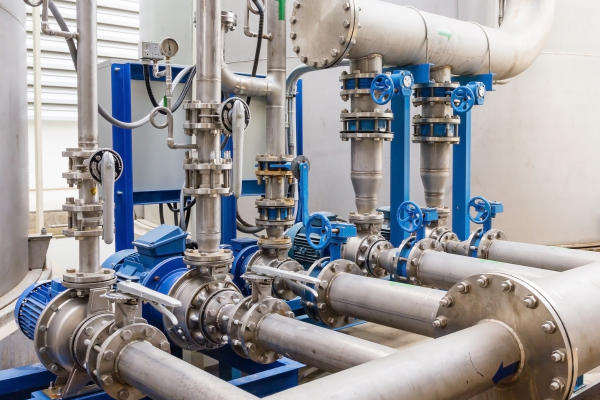
Chilled water piping work involves the design, installation, and maintenance of piping systems that transport chilled water for cooling purposes in various applications, such as air conditioning systems, industrial processes, and refrigeration systems. Chilled water systems are commonly used in large buildings, hospitals, data centers, and industrial facilities. Here are the key aspects of chilled water piping work:
Piping Layout: Designing the layout of the chilled water piping system, considering factors such as the cooling load requirements, distance, flow rates, and the specific needs of the equipment or processes being served.
Piping Materials: Selecting suitable materials for the chilled water piping system based on the specific application, temperature requirements, pressure levels, and corrosion resistance. Common materials used include carbon steel, stainless steel, copper, and various types of plastics.
Sizing and Pressure Drop: Determining the appropriate pipe diameter and evaluating pressure drop along the piping system to ensure efficient and reliable operation. This involves considering factors like flow rates, pipe lengths, fittings, valves, and friction losses.
Pipe Routing: Installing the chilled water pipes according to the designed layout, taking into account factors such as space constraints, thermal expansion, safety requirements, and accessibility for maintenance.
Pipe Jointing: Utilizing suitable methods for joining the chilled water pipes, such as welding, brazing, flanges, grooved connections, or press fittings. Ensuring secure and leak-free connections is crucial for the system's performance and efficiency.
Supports and Hangers: Installing appropriate supports, hangers, and brackets to securely fasten the chilled water pipes and prevent sagging or excessive movement that could lead to stress or damage to the system.
Valves and Fittings: Installing valves, connectors, couplings, and other fittings necessary for the proper functioning and control of the chilled water system. This includes control valves, balancing valves, isolation valves, strainers, and expansion joints.
Chillers and Cooling Towers: Integrating chillers or cooling towers into the chilled water system, considering factors such as capacity, efficiency, and compatibility with the system's design and load requirements.
Air Separators and Filtration: Incorporating air separators and filtration systems to remove air and debris from the chilled water, ensuring smooth and efficient operation and protecting downstream components.
Insulation: Applying appropriate insulation materials to the chilled water pipes to prevent heat gain or loss, minimize condensation, and maintain the desired temperature of the chilled water. Insulation types may vary based on the temperature range and the specific requirements of the application.
Protective Coatings: Applying protective coatings or paints to the exterior of the chilled water pipes to prevent corrosion and increase longevity.
Pressure Relief and Safety Devices: Including pressure relief valves and safety devices to protect the chilled water system from overpressure situations, ensuring safe operation and preventing damage to the equipment or piping.
Regular Inspections and Maintenance: Conducting periodic inspections, maintenance, and testing of the chilled water piping system to identify and address any issues promptly. This includes checking for leaks, inspecting valves and fittings, monitoring pressure levels, and ensuring proper flow and temperature control.
